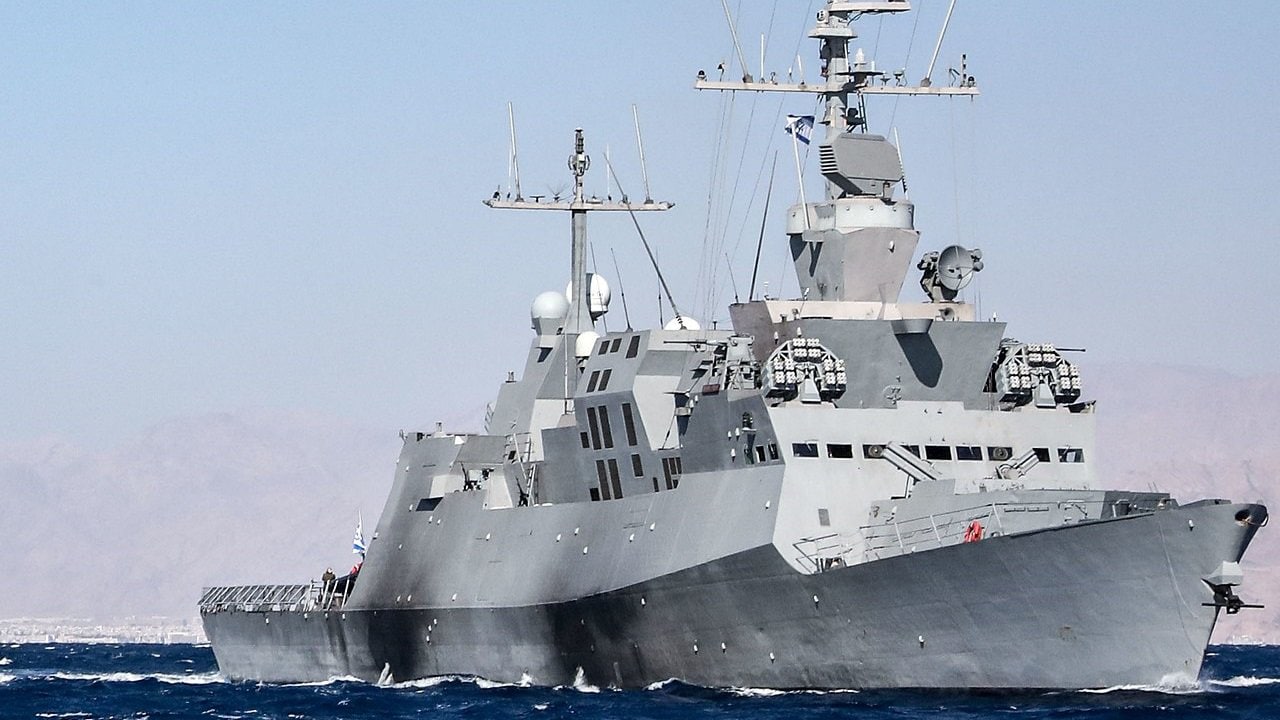A ship-mounted variant of the Iron Dome missile defense system was successfully tested by the Israeli Navy last month. The test came just days after an Iranian drone struck an Israeli-owned tanker off the coast of Oman.
Dubbed the C-Dome, the advanced interception system is intended to function exactly like the Iron Dome. According to the Israeli Defense Ministry’s Israeli Missile Defense Organization, the C-dome was able to identify and take out targets by launching Iron Dome interceptors toward them from the sea. The newly tested system is expected to complement Israel’s multi-tiered air defense network, comprised of the Dome, David’s Sling, Arrow 2, and Arrow 3.
Understanding Israel’s C-Dome System
The C-Dome is the product of a joint effort between the Israeli Navy, Israeli Defense Ministry and industrial giant Rafael Advanced Defense Systems. Designed to thwart incoming projectiles, the C-Dome in practice protects Israel’s combat vessels against a large array of threats. This naval configuration of the Iron Dome features unparalleled assets, including 360-degree circular coverage, simultaneous engagement of multiple targets, and the ability to operate in both blue and littoral waters. The C-Dome uses the same combat-proven interceptors as the Iron Dome system, which has already achieved roughly 1,500 successful interceptions. Rafael explains that the system’s interceptors are vertically launched with unrestricted coverage: “The highly advanced warhead ensures a high kill probability against a wide range of targets,” it explains. “C-Dome’s components include a multi-round launcher assembly loaded with vertically-launched canisterised interceptors,” which is installed under the ship deck.
The Israeli Navy received its fourth and final Magen-class corvette from Germany in 2021. With an extended range of approximately 2,500 nautical miles, the Sa’ar 6 corvettes play a critical role in the branch’s defensive wall strategy. The new corvette class sports a stealthy design of a low-signature corvette at 90 meters long. Despite the corvette’s smaller frame, the vessel will be loaded with the navy’s top-of-the-line weaponry, including Typhoon Weapon Stations, 32 vertical launch cells for Barak-8 surface-to-air missiles, torpedo launchers and over a dozen anti-ship missiles.
In February, Israel successfully completed its first series of live-fire tests of the C-Dome aboard the Israeli Navy’s Sa’ar 6 corvette. Various threat scenarios were played out during the February live-fire test rounds- including cruise missiles, rockets and unmanned aerial vehicles. Israel’s Ministry of Defense released videos of Tamir interceptor missiles being launched from the corvette to target multiple rockets and drones launched from the coast.
Since the Jewish state is highly dependent on maritime security, the successful tests of the C-Dome are paramount. The Defense Ministry said, “Operationalizing the system constitutes a significant milestone in enhancing the capabilities of the corvettes,” adding that the C-Dome “constitutes a significant addition to the Israeli Navy’s defense capabilities in a wide array of missions, including the guarding of strategic assets, the Exclusive Economic Zone, and maintaining the regional maritime superiority of the State of Israel.”
Israel and a Naval Iron Dome: A Matter of Timing
Just days before last month’s C-Dome announcement, the Islamic Revolutionary Guards Corp (IRGC) was accused of targeting an Israeli-owned oil tanker off the coast of Oman. On Nov. 17, an explosives-laden drone struck the Liberian-flagged oil tanker Pacific Zircon, a vessel owned by Israeli Idan Ofer. Western officials believe the Shahed-136 killer drone was launched from the IRGC’s Air Force regional command in Iran. Images depicting large craters in the Pacific Zircon in the aftermath of the attack have circulated on Twitter and in various news outlets.

Iron Dome launcher at the Israeli Air Force exhibition at Ramat David AFB on Israel’s 69th Independence Day.
The IRGC has launched several maritime attacks targeting civilian vessels in the Gulf of Oman over the last decade, and tensions between Israel and Iran have picked up in recent months. Iran has engaged in hostile activities across the region as it faces tremendous domestic turmoil and as nuclear negotiations stall in Vienna. Future maritime incidents are likely, making the C-Dome’s successful live-fire tests even more significant to Israel’s security.
Maya Carlin is a Middle East Defense Editor with 19FortyFive. She is also an analyst with the Center for Security Policy and a former Anna Sobol Levy Fellow at IDC Herzliya in Israel. She has by-lines in many publications, including The National Interest, Jerusalem Post, and Times of Israel.

